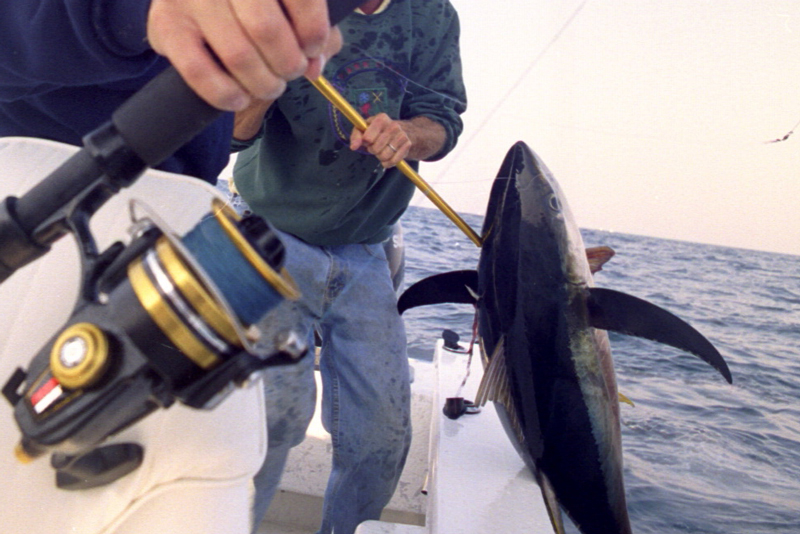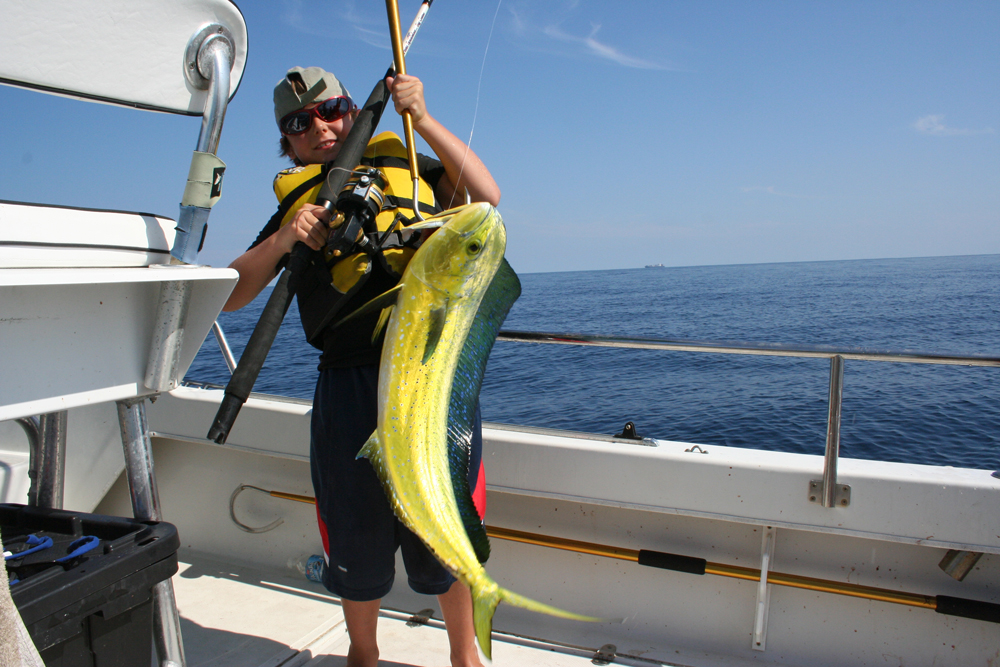Offshore trolling with spinning reels loaded with braided line isn’t quite as crazy as it once seemed. Today’s spinners can put out more drag pressure and stand up to heated runs far better than those of decades past, and braided fishing line gives you the ability to seriously boost the reel’s capacity while also increasing line strength. With the tuna bite picking up along the Mid-Atlantic coast recently, we’ve had several readers email and ask: Can I use spinning reels offshore? What do I need to know, to use them for trolling?

Naturally, when offshore trolling you wouldn’t want to use a reel, even a high-quality reel, that’s sized for stripers—like a Shimano Stradic C3000. This is a great reel, but it’s simply not big enough. Instead, you need to have spinners that fulfill a few requirements. They need to be:
- Large enough to hold at least 400 yards of 50 pound test braided line.
- Able to smoothly apply 20 pounds of drag.
- Well built with high-quality parts, so they don’t turn into a ball of corrosion after the very first offshore trolling trip.
- Have an effective, well-oiled roller bearing on the bail to reduce friction as line zips out from the spinning reel during a run.
Even with all these requirements met, spinning reels will put you at a bit of a disadvantage as compared to lever drag reels that are designed specifically for trolling offshore. The biggest problem? The drag can’t be pre-set to specific increments. You’ll need to be able to apply 15 or 20 pounds of drag to bring tunas and other large pelagic fish to the boat, and most anglers set a lever drag to apply about one-third of the line’s test for the fight. But if you set the reels to this point and start trolling, when a fish strikes there’s a good chance the sudden pressure will break the line. Instead, drags should be initially set for about half the pressure. Then, once a fish is one the line, the angler increases drag pressure to fighting level. With a spinning reel, making this adjustment while battling a fish can be tough.
TIP: Ahead of time, set the reel to half-pressure and then count how many turns of the drag you’ll need to adjust it to full fighting level. Make sure all the anglers onboard know they’ll need to make “X” number of turns on the drag, once a fish is on the line.

Another disadvantage you’ll face is the inability to strap into a harness. Most reels designed for offshore trolling have “lugs” (metal rings) you can clip a harness on, but spinners do not. As a result, anglers will need to work harder with their arms to bring those fish up to the boat. And on top of that, line twist can become an issue if the angler reels while the fish is taking drag. This isn’t nearly as big a problem as it would be with monofilament since it takes a huge amount of twist for braid to start tangling as a result, but still, it’s a possibility.
TIP: If cranking on the reel causes the drag to turn, pump the rod to gain line. If the fish is running, let it run—never reel against the drag.
The bottom line? No, trolling with spinning reels is not ideal. But offshore trolling with spinning reels and braided line is a realistic option, thanks to all the improvements we’ve had in modern fishing gear in recent decades. If you have only spinners and you want to get in on that hot tuna bite or try trolling up some mahi-mahi, go for it—it may be a bit more of a challenge to get those fish up to the boat, but challenging ourselves is a big part of what fishing is all about in the first place.